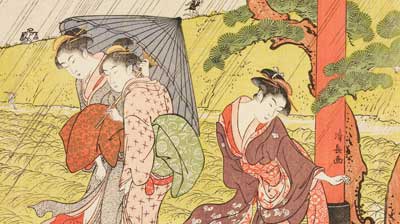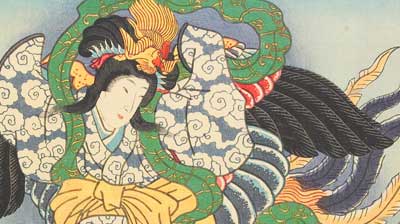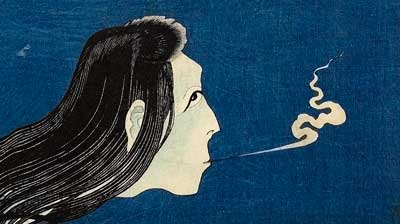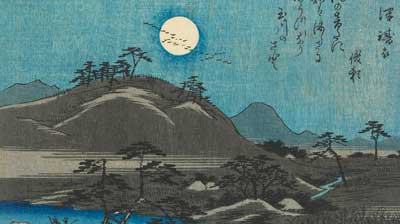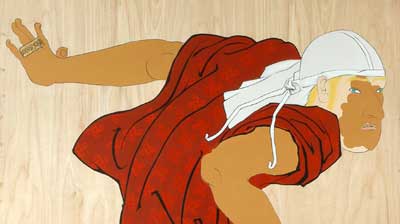Edo Pop
During the Edo period (1615–1868), a time of prolonged peace in Japan, urban commoners, known as chōnin, became rich providing goods and services in the burgeoning cities. However, the strict stratification of Japanese society prevented chōnin from advancing socially. As a result, they pursued hedonistic pleasures and indulged in extravagant pastimes. By the mid-17th century, the chōnin were a dynamic cultural force.
Ukiyo-e refers to woodblock prints and paintings depicting the pleasures and pastimes of the chōnin. The term means pictures (e) of the floating (uki) world (yo). Coined by a 17th-century writer of popular fiction, Asai Ryoi, it is a play on words. A homonym written with a different character for uki had long been used in Buddhist texts to connote the miseries of life on earth. By changing the first character from “misery” to “floating,” Asai cleverly implied that life seemed not dire but pleasure-filled and dreamlike.
Like Pop artists of the 1960s and 1970s in Britain and the United States, ukiyo-e artists found inspiration in contemporary urban life, fashion, and new consumer products. Free of the weighty symbolism and moralizing overtones of earlier imagery, ukiyo-e was a buoyant affirmation of modern life. With their fluid, descriptive outlines, novel vantage points, bold colors, and audacious compositions, these works were fresh and seductively hip. But like Pop art, ukiyo-e also reflected the disruptiveness of popular culture and the brash, transient, and controversial aspects of contemporary society.
This exhibition showcases two hundred superb woodblock prints from the permanent collection of the Minneapolis Institute of Arts. Mass-produced and relatively inexpensive when they were created, they reflect the tastes and diversions of the chōnin–from the courtesans of the licensed pleasure quarters and the dashing actors of the lowbrow Kabuki stage to simpler enjoyments like nature, seasonal celebrations, and travel. These images had a tremendous impact on Western artists beginning in the late 19th century and have provided continuing inspiration to Japanese artists as well. The second half of the exhibition features work by twelve contemporary artists that demonstrates the enduring influence of one of the world’s great artistic traditions.

